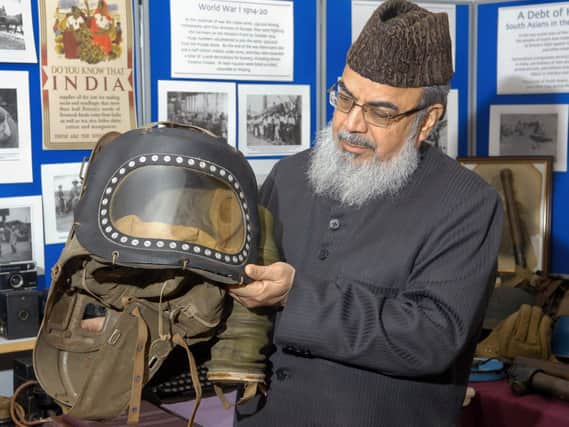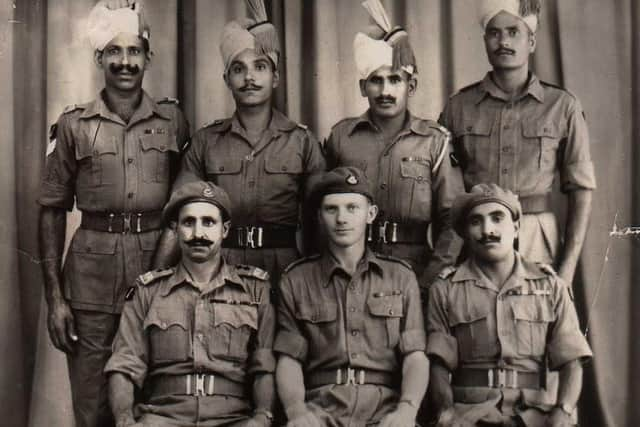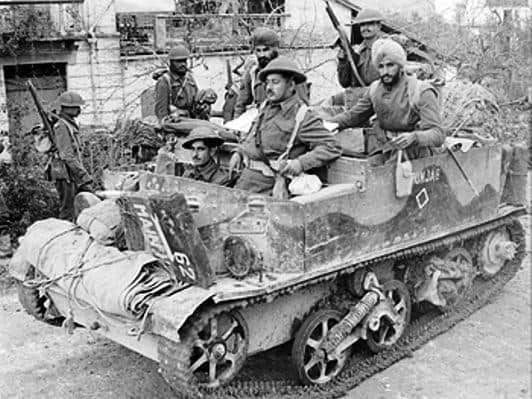Nostalgia: British-Indian Army's global role in Second World War


Speaking to the Reporter series, Professor Naeemi said: “The Second World War broke out on September 1, 1939 when Germany invaded Poland. This event was to drag many different nationalities into a long six-year conflict. Britain, and its empire, along with France, declared war on Germany two days later on September 3 (having made an earlier pledge to help the Poles).
“It became immediately clear the Sub-Continent’s British-Indian garrisons would now be needed more than ever by the governing establishment in London. The massive German army which it was going to fight this time would be a far more powerful force than what the Allies had faced across the trenches during the First World War.
Advertisement
Hide AdAdvertisement
Hide Ad“So another recruitment programme began in British-India to enlist more soldiers along with the existing regiments.


“Almost two million men instantly joined the British-Indian Army. As happened at the First World War’s outset, the vast majority came from the villages of Punjab, from Kashmir, and from the North-West Fontier province’s tribal areas.
“Soldiers from the British-Indian Army were sent to France in the summer of 1940 to support the regular British forces as Hitler’s armies swept across Western and central Europe with lightning speed - backed by a strong Luftwaffe airforce. Cities and towns were bombed from the air while German ‘Blitzkrieg’ attacks shocked the French population.
"The Allied force sent to defend France was itself driven back towards the channel coast. Many men (along with Indian personnel) were taken prisoner at Dunkirk, while others were evacuated to Britain just in time before France fell to the Germans in June 1940.
Advertisement
Hide AdAdvertisement
Hide Ad“Contingents of British-Indian soldiers also made up the Punjab Regiment in General Montgomery’s Eight Army. These soldiers were already used to living in the Sub-Continent’s humid heat. If the men were able to cope with the scorching hot weather, then they could take on anything.


“Senior British Army officers in India were more than clearly aware of this fact. As a result, the Indian ‘Sephoys’ were ordered to join in the desert campaign of North Africa.
“A German Panzer force known as the Africa Corps was in the region at that time. It was led by General Erwin Rommel. After fighting several long battles, Rommel’s forces finally surrendered to the Allies in 1942.
“Having playing their heroic part in North Africa, all the men from the Punjab Regiment were shipped across the Mediterranean Sea to Italy. Here, they helped US forces to liberate the country from Benito Mussolini’s fascist regime by taking part in combat missions at places like Monte-Cassino.
Advertisement
Hide AdAdvertisement
Hide Ad“The Italian campaign led to Mussolini’s downfall. Italy now agreed to fight on the Allied side.
“Besides making a huge contribution in Europe and North Africa, it was in South-East Asia where the bulk of the British-Indian Army’s brave soldiers fought their fiercest battles against the Imperial Japanese Army.
“Khaki uniformed Indian units were ordered to take part in some dangerous, yet forgotten campaigns deep in the dense tropical jungles of Burma and Thailand.
"Here the soldiers also had to cope with lots of natural dangers like poisonous snakes, deadly scorpions, hungry crocodiles, as well as highly infectious diseases such as gangrene and malaria.
Advertisement
Hide AdAdvertisement
Hide Ad“Soldiers from the British-Indian Army were also at the frontline of some intense fighting when the Japanese tried to invade and occupy India’s eastern border province Assam in 1944. The Sephoys defended this area so well that the Japanese were in the end forced to retreat back into Burma with heavy casualties.
“Parachute regiments of British-Indian soldiers were also involved in Operation Overlord - better known as the D-Day landings.
"Indian Paratroopers jumped out into the skies of Normandy in June 1944 to support the Allied ground forces in their campaign to liberate Europe from the occupying Nazi armies.
“An estimated 87,000 military personnel from the Sub-Continent died during the Second World War. Over 67,340 Indian soldiers had also suffered severe beatings and starvation in Japanese POW camps.
Advertisement
Hide AdAdvertisement
Hide Ad“At least 34 George Crosses, along with 18 Victoria Crosses, were awarded to soldiers of the British-Indian Army for showing exceptional bravery in wartime.
“The British-Indian Army was tough and brave. Two million soldiers from the British-Indian Army were on active duty in Western Europe, as well as across South-East Asia, by the time the Second World War finally came to an end in September 1945.
“The Indian contribution was once more noted by the establishment in London after Germany and Japan had surrendered. The turbaned British-Indian Army’s soldiers had shown some amazing courage.
“The British Raj was also touched by the loyalty of these men at a time when the Indian Independence movement led by Gandhi had been against the war effort.
Advertisement
Hide AdAdvertisement
Hide Ad“The Second World War had at last ended. The time had now come to build the peace.
"A new Labour government was elected in Britain with a massive landslide majority. This new government was eager to get the factories moving back to peacetime production.
“Soldiers from the British-Indian Army were now being seen as a valuable future peacetime workforce for Britain’s mills and factories.”